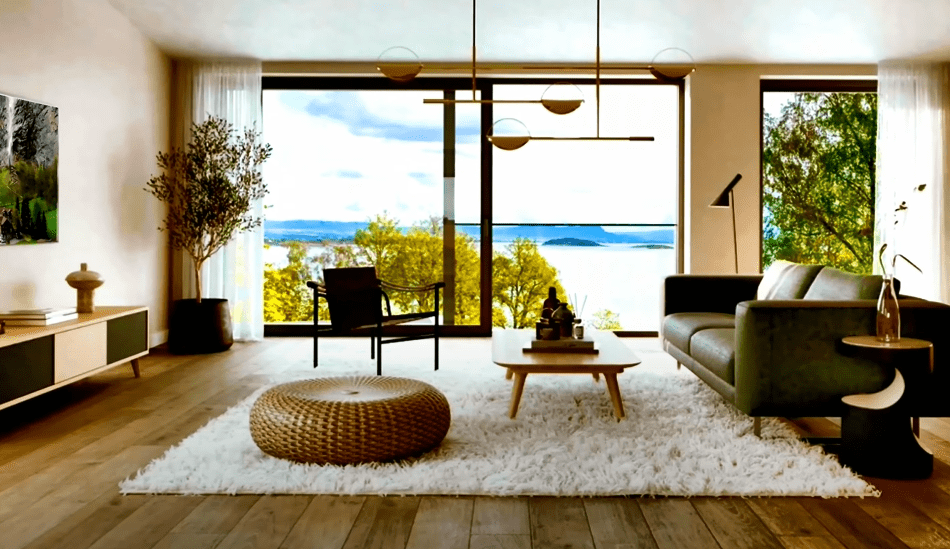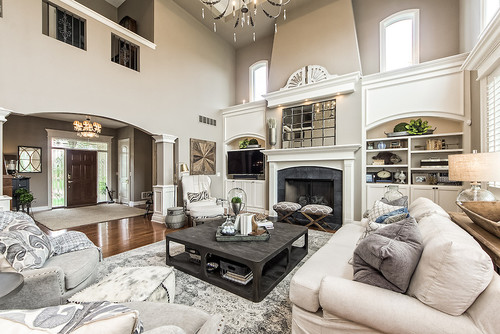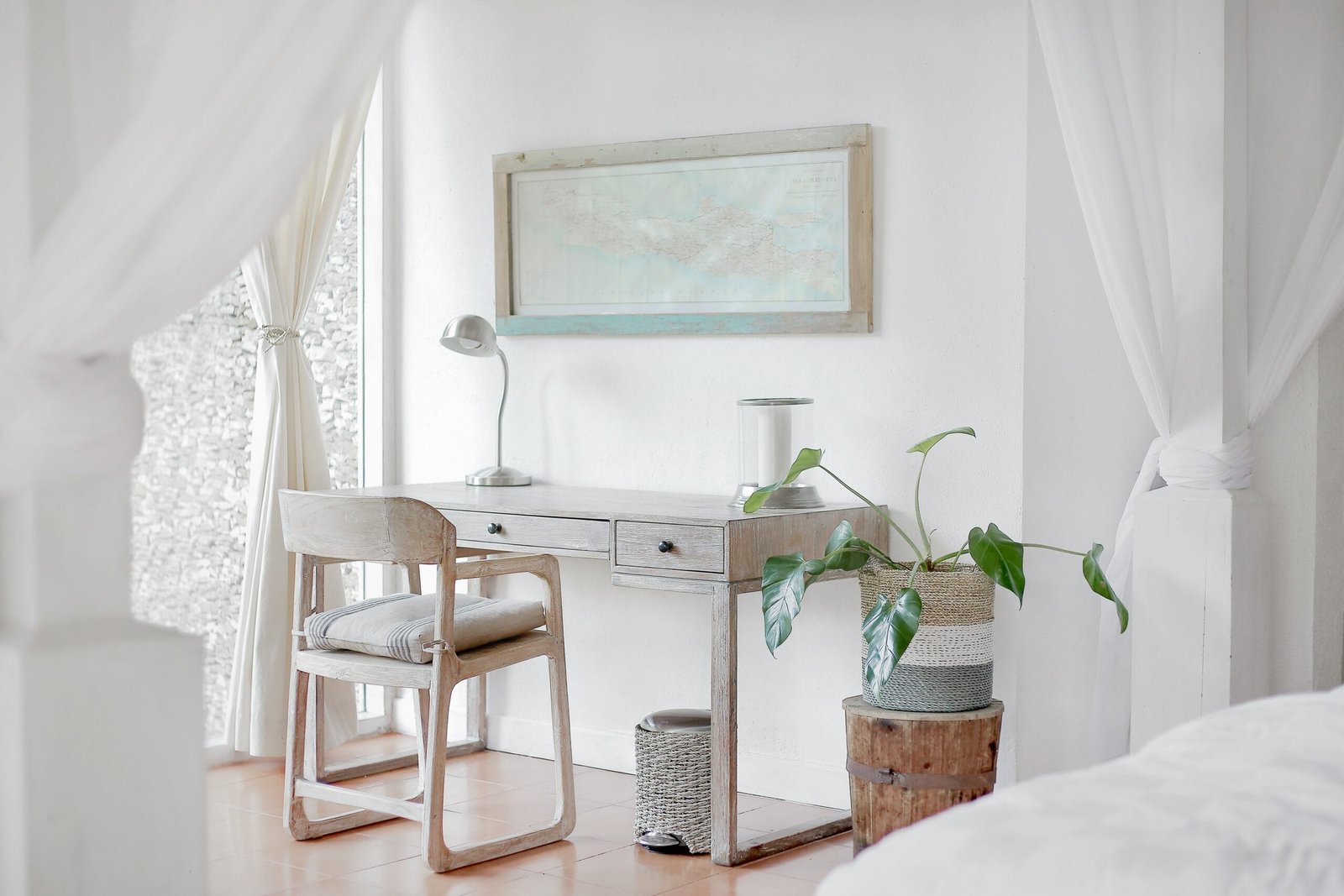The transitional style – a balanced combination.
Do you need some new decorating ideas? The transitional style is a well-balanced blend of previously established styles, with the goal of creating a symbiotic relationship between the preferences of all persons who will live in the area to be constructed. Although it is best known for its blend of modern and traditional elements, this aesthetic can gain new meaning through bolder combinations.
However, you detect it easily in whatever combination, due to the conflicting aspects from a stylistic or chromatic standpoint, but which may still live without competing or generating a discordant note. The transition between different forms of aesthetics must be made carefully, without combining two statement pieces, which would otherwise produce confusion and rejection.
Please, read our post and do not forget to check our YouTube channel “Grig Stamate”:
https://www.youtube.com/@GrigStamate
You will find there, thousands of designing, furnishing, and decorating ideas for your home interior and outdoors.
Allow me to mention one of them:
Beautiful Living Rooms, #9: Mid-Century Modern Design (video)
Watch here a beautiful video from YouTube channel
https://www.youtube.com/@rebeccarobeson1
If we have aroused your interest, we have included some visual landmarks of the transitional style below, which you may use as furnishing ideas to begin such a project or to describe to an interior designer the design you desire:
Soft, pastel, and neutral colors.
Because it is an eclectic design, the color limitations are limited only by good judgment. Huge surfaces, such as floors, walls, and ceilings, as well as huge carpets, should be painted in neutral or pastel colors that do not fatigue the eye. A strong purple tone or psychedelic print could have a negative impact on the mood of someone who spends several hours in that environment. Furthermore, a plain surface in muted colors will allow you to personalize the space with details that stand out: an elegant wall finish with a playful sofa, an unusual combination of Buddhist statues next to boho candles with tall bamboo candelabra, a nearby Renaissance statue with an oversized graffiti-style painting, and so on.

Decorating ideas in transitional style.
Tips & Tricks
Don’t forget the art.
Art may be more than just a splash of color in a room; it can also add a unique twist to its design. Do you have any decorating ideas? What about introducing a brightly colored painting into a room with classic lines and ivory tones? What about a wall of de-saturated personal images framed and organized in three columns symmetrically, as if it were an art gallery? How about introducing them to a lively environment full of children’s toys, set in “organized chaos”…or even real?
Any style can be used to make artistic products. It is critical that there is only one protagonist, with the other elements serving as satellites to enhance it. This manner, you’ll have an accent object that doesn’t compete with the others and doesn’t crowd the space.

Photo by KP Designs Group – Look for living room pictures
Choose contrasting styles.
Transitional style can be carried to the extreme for people looking for bold decorating ideas: choose two sorts of aesthetics that are not only distinct, but also clashing. Such as the traditional one, which is distinguished by folklore patterns, floral prints, embroidered or woven textiles, particular geometric shapes, and recognized colors like brilliant red or blue. In a nutshell, ornamental. To achieve the desired contrast, look to the opposite pole of aesthetics: Scandinavian style, which is defined by simplicity, muted colors, decent juxtapositions that stand out only through layering of elements and less through chromatic contrasts or statement pieces that catch your eye at first sight. How can these two styles coexist in the same place without being constrained?
Using one as a backdrop – the Scandinavian style with plain surfaces, matte textures, and simple shapes – and selecting the details that will lift the room out of obscurity – decorative motifs that stand out on a simple background, complex shapes that can be analyzed without tiring your eyes in a relaxing environment.
The use of light.
Transitional style can be defined as a conversation between several parts. It is up to you whether the talk turns into a quarrel or promotes mutual understanding. When you have some design ideas for this type of aesthetic but aren’t sure how to rank the pieces, lights can come in handy.
In addition to the central light, which is responsible for overall visibility, we propose that you include an accent light, which spotlights specific sections of the room. If the two combined styles are navy and Scandinavian, for example, you could position a spotlight over a wooden ship on a central shelf. If you have an accent wall with framed shabby chic images, you might set a romantic-looking floor lamp there.
Experiment with different types of light but stick to one temperature to ensure an easy transition from one light to another. Another light-related guideline that must be followed in all situations is to attach the light of a mirror to the side. It will cast shadows on your face above the mirror.
Other related posts from our website:
https://howtobuildahouseblog.com/define-your-home-interior-with-a-collection-full-of-art/
https://howtobuildahouseblog.com/the-subtleties-of-decorating-a-bedroom-in-dark-tones/
Thank you so much for your attention.
Stay tuned. We will upload many other amazing posts to our website and videos onto our YouTube channel.
Thank you so much for your time and attention.
Best Regards
See you to another post,
Bye, Bye


